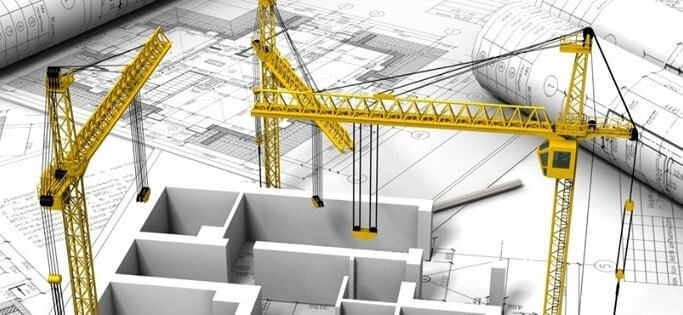Civil Engineering Exit Exam Practice Exam
in University Exit ExamWhat you will learn?
Upon successful completion of the Civil Engineering Exit Exam, students will have demonstrated their mastery of core civil engineering concepts and their ability to apply them in practical scenarios. This exam helps universities and colleges evaluate the effectiveness of their civil engineering program and provide students with a recognized certification of their knowledge and skills. Additionally, it prepares students for their future careers by assessing their readiness to work in the civil engineering industry and equips them with the confidence and competence to face engineering challenges head-on.
About this course
The Civil Engineering Exit Exam Practice Exam is designed to help civil engineering students prepare for their final exit exam. This practice exam provides a simulated testing environment where you can assess your knowledge and understanding of various concepts, principles, and applications in civil engineering. The exam covers topics such as structural analysis, geotechnical engineering, transportation engineering, and environmental engineering. By taking this practice exam, you can evaluate your preparedness, identify areas that require further study, and build confidence for the actual exit exam.
Requirements
Undergraduate students in Ethiopia studying Civil Engineering
Access to study materials and resources related to the exam content
Basic understanding of civil engineering principles and concepts
FAQ
Comments (2)

THAT IS GOOD
Mechanics of materials is a fundamental topic in structural analysis that is used to analyze the forces and deformations of structures. It is a complex subject that involves the study of stress, strain, elasticity, plasticity, and failure. Mechanics of materials is used in a wide variety of engineering applications, including structural analysis, machine design, civil engineering, aerospace engineering, and automotive engineering. There are many resources available to learn more about mechanics of materials, including textbooks, online courses, engineering handbooks, and professional societies.
Structural design and analysis is a complex and challenging process that involves determining the dimensions and materials of a structure to ensure that it can withstand the loads that it will be subjected to. It is an iterative process that involves a number of steps, including load analysis, structural analysis, design of structural members, and verification of design. Structural design and analysis is an essential part of ensuring the safety and reliability of structures.
Load analysis is the process of determining the loads that are applied to a structure. It is an essential part of structural design and analysis. There are a number of methods that can be used to perform load analysis, including static analysis, dynamic analysis, load factor analysis, and response spectrum analysis. The specific method that is used will depend on the type of structure and the loads that it is subjected to.
Highway design and planning is a complex process that involves a number of factors, including traffic demand, traffic capacity, level of service, environmental impact, safety, and cost-effectiveness. The goal of highway design and planning is to develop a plan that will meet the needs of the community while also being safe and environmentally friendly.
Traffic engineering and control is a field of engineering that deals with the planning, design, operation, and management of traffic systems. It includes the study of traffic flow, traffic signals, signs, and markings, and other methods of controlling traffic. The goal of traffic engineering and control is to improve the safety and efficiency of transportation systems.
Pavement design is the process of selecting the materials and thickness of a pavement to withstand the anticipated traffic loading and environmental conditions. It is an essential part of ensuring the safety and durability of roads and highways. The goal of pavement design is to select the most cost-effective solution that will provide the desired level of performance for the expected lifespan of the pavement.
Soil mechanics is a branch of engineering that deals with the behavior of soils. It is used in a wide variety of applications, including the design of foundations, earth dams, and retaining walls. Soil properties, stress and strain, consolidation, shear strength, and slope stability are some of the key concepts in soil mechanics.
Foundation design is the process of selecting the type and size of foundation that will support a structure. It is an essential part of ensuring the safety and stability of a structure. The type of foundation that is selected will depend on the soil conditions at the site, the load bearing capacity of the soil, the load that the structure will exert on the foundation, and the amount of settlement that is acceptable. Foundations may be reinforced with steel to increase their strength and stiffness.
Earth retaining structures are used to hold back soil or other materials. They are typically used in areas where there is a difference in elevation, such as along highways, railways, and riverbanks. The type of earth retaining structure that is selected will depend on a number of factors, including the height of the wall, the type of soil, and the anticipated loads. Earth retaining structures require regular maintenance to ensure that they remain stable and functional.
Water and wastewater treatment are essential for protecting public health and the environment. They are regulated by a variety of federal, state, and local agencies. Water and wastewater treatment processes typically include screening and grit removal, coagulation and flocculation, sedimentation, filtration, and disinfection.
Air pollution control is the process of reducing the amount of air pollutants released into the atmosphere. It is an important part of protecting human health and the environment. Air pollution control technologies can be classified as pre-treatment, in-process, or post-treatment. Air pollution regulations are put in place by governments to control the amount of air pollutants that are released into the atmosphere.
Environmental impact assessment (EIA) is a process that identifies, predicts, and assesses the potential environmental impacts of a proposed project or activity. It is a tool for decision-making that helps to ensure that projects are developed in a way that minimizes their environmental impacts. The steps involved in an EIA typically include screening, scoping, impact assessment, public participation, and decision-making. The types of environmental impacts that are considered in an EIA can vary depending on the project or activity, but some of the most common environmental impacts that are considered include air quality, water quality, land use, biological diversity, cultural resources, and social impacts. Public participation is an important part of the EIA process, as it allows the public to learn about the proposed project or activity and to provide input on the potential environmental impacts.
Project planning and scheduling is the process of defining the activities that need to be completed in order to complete a project, and then determining the sequence in which these activities should be completed and the resources that will be needed to complete them. It is an important part of construction management, as it helps to ensure that projects are completed on time, within budget, and to the required quality standards.
Construction cost estimation is the process of predicting the total cost of a construction project. It is an essential part of construction management, as it helps to ensure that projects are completed within budget. There are a variety of methods of construction cost estimation, including unit pricing, factoring, and parametric estimating. The factors that affect construction cost estimation include the size of the project, the complexity of the project, the location of the project, the availability of resources, and the prevailing market conditions.
Project quality management is the process of ensuring that a project meets the requirements of the project stakeholders. It is important because it helps to ensure that projects are completed to the required standards, meet the needs of the stakeholders, reduce costs and improve efficiency, improve safety and reduce the risk of accidents, and improve the reputation of the construction company.
AutoCAD and 3D modeling are essential tools for technical designers and drafters. They allow designers to create accurate and precise drawings and models that can be used to communicate their designs to others. 3D modeling can also be used to create prototypes of products, which can help designers to identify and correct any problems with their designs before they are manufactured.
Structural detailing is the process of creating detailed drawings of structural elements. It is an important part of the construction process, as it ensures that structural elements are designed and built to meet the required standards. Structural detailing requires a thorough understanding of structural engineering principles, as well as the ability to use technical drawing standards.
Building Information Modeling (BIM) is a process that uses 3D models to represent a building and its components. It is a more advanced form of CAD that can be used to create more accurate and detailed models of buildings. BIM models can be used for a variety of purposes, such as planning and design, construction, maintenance, operations, and visualization.
Analyzing real-world engineering projects can help engineers to improve their designs and to identify new challenges and opportunities. By using tools and techniques such as systems engineering, risk analysis, cost-benefit analysis, and simulation, engineers can make better decisions about how to allocate resources and how to manage risk. This can lead to more successful engineering projects that are more likely to meet the needs of their stakeholders.
Designing sustainable and resilient infrastructure is important because it can help to protect the environment, conserve natural resources, reduce the cost of infrastructure maintenance and repair, improve safety and security, and make infrastructure more resilient to natural disasters.
Applying codes and standards is important because it helps to ensure the safety, reliability, durability, and quality of engineering projects, and it protects the public health and welfare.

Reviews (1)










good idea